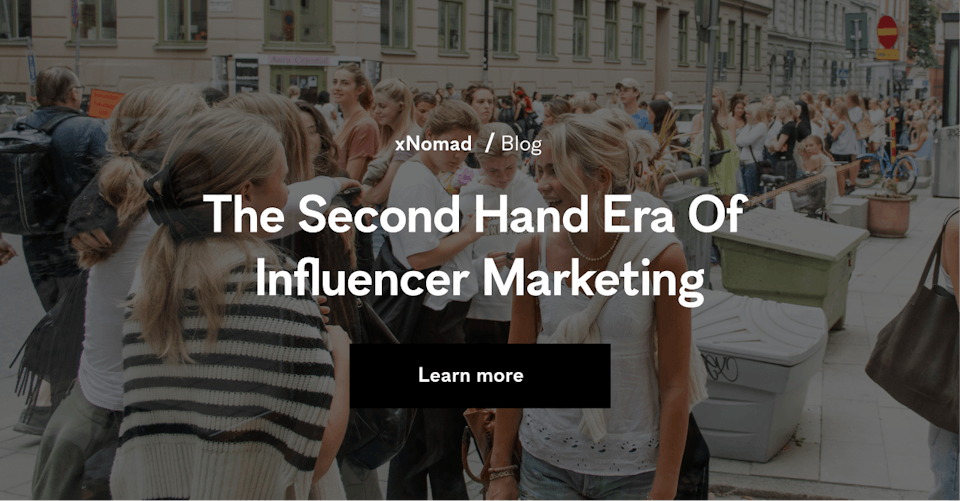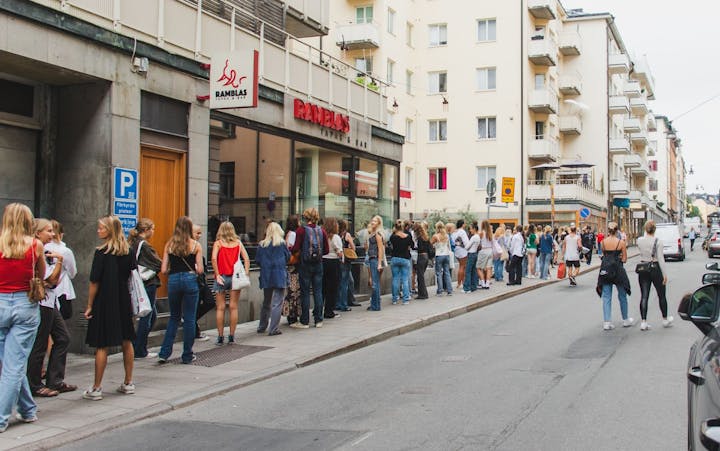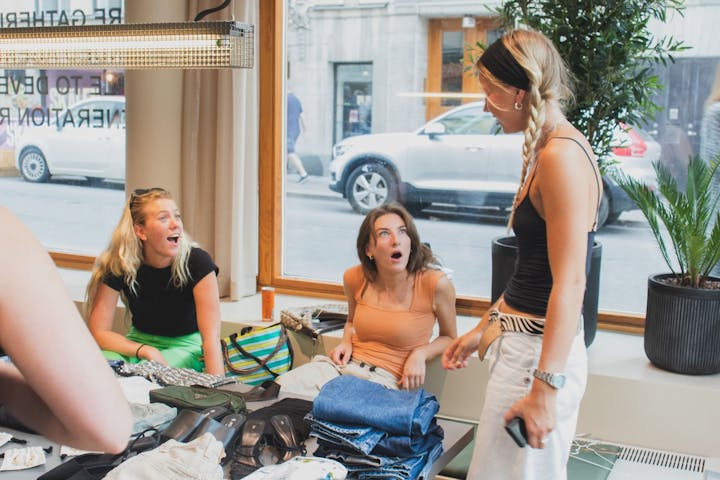The Second-Hand Era of Influencer Marketing
xNomad hosted five of Sweden’s up-and-coming fashion it-girls at Next Gen Retail Hub for a one-day Vintage Sale.

Share
xNomad hosted five of Sweden’s up-and-coming fashion it-girls at Next Gen Retail Hub for a one-day Vintage Sale. By partnering with Philippa Parnevik, Engla Löf, Alice Löf, Sara Svalberg, and Verona Farrell with a combined +400k social media following, the one-day event garnered massive amounts of attention. On the day of the event, hundreds of eager shoppers lined up outside of the Hub at Sankt Paulsgatan 22A - to get the opportunity to roam an impressive selection of vintage pieces - with everything from Manolo Blahnik to H&M.

The concept for the Vintage Loppis revolved around all of the five it-girls selecting some pieces from their closets to sell at favorable prices to their followers - to firstly, sort out their closets, but additionally to prolong the garments' average lifespans and promote a more circular mindset toward fashion consumption.
Sustainable fashion was not only the focal point throughout this one-day event, but also the core of all of the five fashion influencers' social media presence. Where the girls through their entrepreneurial spirit have been able to build a following rooted in their fashion-forwardness, trendsetter status, and social media savviness - all in relation to second-hand and vintage fashion.

The event was a staggering success and ended two hours prior to the actual closing time - since all of the pieces were sold out. The Vintage Loppis’ success does not only speak for the power that influencer marketing holds in terms of generating awareness, building buzz, and gathering people for experiences - but it further showcases its ability to influence trend cycles.
Through the power of Engla, Philippa, Verona, Alice, and Sara’s social media presence and passion for second-hand clothing - hundreds of people were excited to flock to the streets to give old clothing pieces a new life. Which in an industry dominated by fast-fashion brands and where consumer demand successively decreases the duration of trend cycles, speaks length for how events like the Vintage Loppis - can encourage a more sustainable mindset within an unsustainable industry.
xNomad was thrilled to be able to host the five fashion girls and the Vintage Loppis. Are you on the lookout for a retail space to host your next event?
Let xNomad help you in sorting things out. Check out our platform and end-to-end solution.